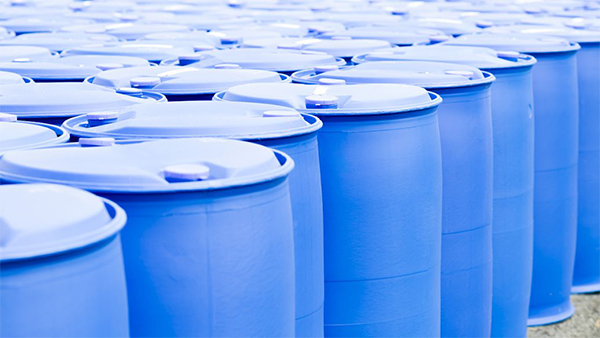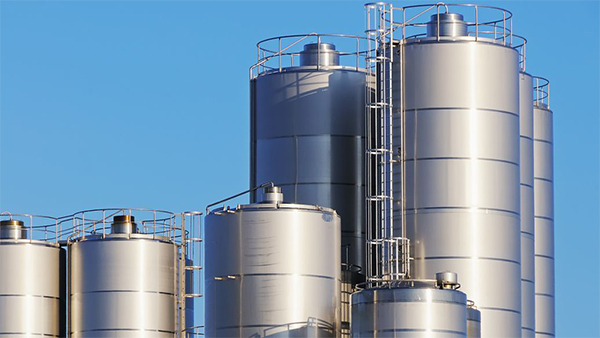Today, Huai 'an Fine Chemical Factory introduced the precautions and accident treatment methods for the experiment of dangerous reagents in No.35 Middle School. Let's have a look!
1. acid
Precautions: When diluting sulfuric acid, pour it into water slowly, and do not reverse the operation. Volatile acids, such as hydrochloric acid, acetic acid, nitric acid, trifluoroacetic acid, trifluoromethanesulfonic acid, perchloric acid, etc., should be operated in a fume hood with a mask to protect the environment.
Accident treatment: when burned by acid, rinse with plenty of water first, then with 3-5% sodium bicarbonate solution, and then rinse with water. In severe cases, please seek medical attention immediately.
2. Alkali
Matters needing attention: sodium hydroxide, potassium hydroxide, ammonia water, etc. Please wear white coat and gloves when using. NaOH and KOH should be weighed with glassware. Ammonia should be operated in fume hood.
Accident handling:
① Skin contact: Rinse immediately with water for at least 15 minutes. If you have burns, seek medical treatment.
② Eye contact: Lift the eyelid immediately and rinse with running water or normal saline for at least 15 minutes. Or rinse with 3% boric acid solution. Seek medical attention for severe cases.

3. Trichloromethane
Precautions: Moderate toxicity, carcinogenicity, flammable when operated in fume hood.
Accident handling:
① Eye contact: Immediately lift the eyelid and wash it thoroughly with plenty of running water or normal saline.
② Inhalation: Get away from the scene quickly to fresh air. Keep respiratory tract unobstructed and put out fire at windward. Extinguishing agents: carbon dioxide and sand.
4. dichloromethane
Precautions: Low toxicity, anesthetic effect, mainly damaging central nervous system and respiratory system, flammable.
Inhalation: leave the site quickly to fresh air. Keep respiratory tract unobstructed
Fire extinguishing methods: sand, foam and carbon dioxide.
5. Toluene
Precautions: It is of low toxicity. Irritating to skin and mucous membrane, having anesthetic effect on central nervous system.
Inhalation: leave the site quickly to fresh air. Fire extinguishing agent for keeping respiratory tract unobstructed: foam, dry powder, carbon dioxide and sand. Fire extinguishing with water is ineffective.
6. Benzene
Note: It is moderately toxic, carcinogenic and mutagenic. Flammable, its vapor and air can form explosive mixture. Please wear gloves, masks and goggles and operate in a fume hood.
Extinguishing agent: mist water, foam, dry powder, carbon dioxide and sand. Fire extinguishing with water is ineffective.
7. Formaldehyde
Caution: This product has strong irritation to mucous membrane, upper respiratory tract, eyes and skin. Operate in a fume hood.
Skin contact: Rinse thoroughly with soapy water and clear water. Or rinse with 2% bicarbonate solution. This product has a certain stimulating effect on eyes and respiratory mucosa.
8. Benzaldehyde
Caution: This product can stimulate eyes and respiratory mucosa to some extent.
9. Acetone
Precautions: It is of low toxicity. Its vapor and air can form explosive mixture. It is easy to burn and explode in case of open flame and high heat. Can react strongly with oxidant.
Extinguishing agent: foam, dry powder, carbon dioxide and sand. Fire extinguishing with water is ineffective.
10. ethyl acetate
Note: It is low toxic and flammable.
Fire extinguishing method: fire extinguishing agent: anti-soluble foam, carbon dioxide, dry powder and sand. Fire extinguishing with water is ineffective.
11. ethyl bromoacetate
Caution: It has strong irritation to eyes, skin, mucous membrane and respiratory tract. Please wear gloves, masks and goggles. It is flammable when operated in a fume hood.
Skin contact: Rinse the skin thoroughly with soapy water and clear water. For eye contact: Lift the eyelid immediately and rinse thoroughly with plenty of flowing clear water or normal saline for at least 15 minutes. Extinguishing agent: soluble foam, dry powder and sand.
12. Ethanol
Note: It is slightly toxic and flammable.
Extinguishing agent: soluble foam, dry powder, carbon dioxide and sand.
13. n-butanol
Note: It is low toxic and flammable.
Fire extinguishing agent: anti-soluble foam, dry powder, carbon dioxide, mist water, fire extinguishing agent 1211, sand.
14. Methanol
Precautions: It belongs to medium toxicity, which has a special selective effect on optic nerve and retina, causing lesions; It can cause metabolic acidosis. Flammable.
Extinguishing agent: soluble foam, dry powder, carbon dioxide and sand.

15. isopropyl alcohol
Note: It is slightly toxic and flammable.
Extinguishing agent: soluble foam, dry powder, carbon dioxide and sand.
16. Ether
Precautions: It belongs to micro-toxicity, and its vapor and air can form explosive mixture. It is easy to burn and explode in case of open flame and high heat. Can react strongly with oxidant. Explosive peroxide can be generated after long-term storage in air.
Extinguishing agent: foam, dry powder, carbon dioxide and sand. Fire extinguishing with water is ineffective.
17. petroleum ether
Note: It is slightly toxic and flammable.
Extinguishing agent: foam, dry powder, carbon dioxide and sand. Fire extinguishing with water is ineffective.
18. anisole
Note: It is slightly toxic and flammable.
Extinguishing agent: foam, carbon dioxide, dry powder and sand. Fire extinguishing with water is ineffective.
19. p-nitrophenol
Precautions: Poison, which has strong stimulation to skin and mutagenicity.
Skin contact: Rinse thoroughly with soapy water and clear water.
Eye contact: immediately lift the eyelid and rinse with plenty of running water or normal saline.
20. pyridine
Precautions: It is low toxic and has strong irritation; It can anesthetize the central nervous system. Irritating to eyes and upper respiratory tract. Flammable.
Fire extinguishing methods: foam, carbon dioxide, dry powder, sand, mist water.
21. tetrahydrofuran
Note: Inhalation is slightly toxic, while oral administration is low toxic. Has stimulating and anesthetic effects. Its vapor and air can form explosive mixture. It is easy to cause combustion in case of open flame, high heat and strong oxidant. Peroxides with potential explosion hazard can be generated by contact with air or light.
Extinguishing agent: foam, dry powder, carbon dioxide and sand.
22. N,N- dimethylformamide
Precautions: low toxicity, burning, high heat, open flame or contact with oxidant, which may cause the danger of burning and explosion. It can react violently with concentrated sulfuric acid and fuming nitric acid, and even explode. It can react violently with halide (such as carbon tetrachloride).
Extinguishing method: Extinguishing agent: mist water, soluble foam, dry powder, carbon dioxide and sand.
23. piperidine
Precautions: It is moderately toxic, flammable, and will emit toxic gases when exposed to open flames and burning. Strong irritation to eyes and skin.
Extinguishing agent: foam, dry powder and carbon dioxide.
24. cyclohexane
Precautions: It is of low toxicity. It is extremely flammable with stimulating and anesthetic effects, and its vapor and air can form explosive mixture. It is easy to burn and explode in case of open flame and high heat. Contact with oxidant causes strong reaction and even causes combustion. In a fire scene, heated containers are in danger of explosion.
Extinguishing agent: foam, dry powder, carbon dioxide and sand. Fire extinguishing with water is ineffective.
25. N- methylmorpholine
Precautions: Inhalation of vapor or mist of this product is irritating to respiratory tract and flammable liquid.
26, acetyl chloride
Caution: Irritating to upper respiratory tract, causing cough and chest pain after inhalation. Flammable.
Fire extinguishing methods: carbon dioxide, dry powder, 1211 fire extinguishing agent and sand. Fire extinguishing with water or foam is prohibited.
27. acetonitrile
Precautions: It is moderately toxic and flammable.
Extinguishing agent: soluble foam, carbon dioxide, dry powder and sand. Fire extinguishing with water is ineffective.
28. acetic acid
Precautions: It is of low toxicity and irritating to nose, throat and respiratory tract after inhalation. It has a strong stimulating effect on eyes.
Skin contact: Rinse immediately with water for at least 15 minutes.
Eye contact: Lift eyelid immediately and rinse with running water or normal saline for at least 15 minutes.
29. formic acid
Note: It belongs to low toxicity, which mainly causes irritation to skin and mucous membrane.
Skin contact: Rinse immediately with water for at least 15 minutes.
Eye contact: Lift eyelid immediately and rinse with running water or normal saline for at least 15 minutes.
30. Metallic sodium
Precautions: It can spontaneously combust in the air, has high chemical reaction activity, and can burn in oxygen, chlorine, fluorine and bromine vapor. When it meets water or moisture, it reacts violently to release hydrogen, which gives off a lot of heat and causes combustion or explosion. When exposed to air or oxygen, sodium metal can burn itself and explode, causing the melt to splash. Reacts violently with halogen, phosphorus, many oxides, oxidants and acids. Wear gloves, masks and goggles when using, operate under petroleum ether or kerosene, and never expose to the air for a long time.
Accident treatment: Do not use water, halogenated hydrocarbon (such as 1211 fire extinguishing agent), sodium bicarbonate and potassium bicarbonate as fire extinguishing agents. Instead, dry sodium chloride powder, dry graphite powder, dry sodium carbonate powder, dry calcium carbonate powder and dry sand should be used to extinguish the fire.
Eye contact: Lift eyelid immediately and rinse with running water or normal saline for at least 15 minutes.
31. Magnesium
Precautions: Flammable, producing intense white light and high heat when burning. It reacts violently with water or moisture to release hydrogen, which gives off a lot of heat and causes combustion or explosion. In case of severe reaction with chlorine, bromine, iodine, sulfur, phosphorus, arsenic and oxidant, there is danger of combustion and explosion. Powder and air can form explosive mixture. When it reaches a certain concentration, it will explode when it meets Mars.
Fire extinguishing method: water, foam and carbon dioxide are strictly prohibited. The effective fire extinguishing method is to smother the seedlings with dry graphite powder and dry sand to isolate the air. The eyes and skin should be protected during rescue, so as not to burn the body and the eyesight with magnesium light.
32. Sodium hydride
Note: The chemical reaction activity is very high, and it can spontaneously ignite in humid air. Heat or contact with moisture and acids will release heat and hydrogen, causing combustion and explosion. Can react strongly with oxidant, causing combustion or explosion. When exposed to moisture and moisture, it generates hydroxide, which is highly corrosive.
Skin contact: Rinse with plenty of flowing water for at least 15 minutes.
Eye contact: Lift the eyelid immediately and rinse thoroughly with plenty of running water or normal saline for at least 15 minutes. Seek medical attention for severe cases. Fire extinguishing method: Do not use water, foam, carbon dioxide, halogenated hydrocarbon (such as 1211 fire extinguishing agent). Only use metal covers or dry graphite and dolomite powder to extinguish the fire.
33. Sodium borohydride and potassium borohydride
Precautions: Burning can be caused by water, humid air, acids, oxidants, high heat and open flame.
Skin contact: Rinse thoroughly with running water immediately.
Eye contact: Immediately lift the eyelid and wash it with running water or normal saline for at least 15 minutes. Seek medical attention in severe cases.
Fire extinguishing methods: dry powder and sand. Water is prohibited. Foam is prohibited.
34. Benzyl bromide
Note: This product is irritating, which can cause obvious respiratory irritation and chest tightness. Please wear white coat and gloves, mask and goggles when using it. It is flammable when operating in a fume hood with open fire and high heat.
Skin contact: Take off contaminated clothes and wash skin thoroughly with soapy water and clear water.
Eye contact: Lift eyelid and rinse with running water or normal saline. Seek medical attention.
Inhalation: leave the site quickly to fresh air. Keep respiratory tract unobstructed. If breathing is difficult, give oxygen. If breathing stops, give artificial respiration immediately.
35, bromine
Note: Please wear white coat, gloves, mask and goggles when using, and operate in a fume hood.
Accident treatment: immediately rinse with plenty of water, then wipe with alcohol until there is no bromine solution, then apply glycerin or scald ointment, and seek medical treatment for serious cases.